It’s probably not the Church of St Peter and St Mark but nobody agrees on an alternative. It’s a rather nice mosque right at the end of the Golden Horn walls near the Blachernae Palace (or what’s left of it). 41°02′18.96″N 28°56′38.40″E Apparently, a church was founded here in 458 but this is not it. The main structure seems to date from the late ninth century. Unusually, there is a tomb inside the mosque; that of Cabir, killed with the great Eyüp in the Arab siege of Constantinople in 668.
The building must have had a hefty reconstruction as the mihrab fits perfectly in the focus of the church. Still, it’s a nice place and the gardens are pleasant.
This is a view of the church from the south-west in 2016. Note the polygonal exteriors of the apses as well as the unusual recessed stonework where the left-hand apse meets the south wall.
This view shows how much the stonework has changed. The window extended further down. The partial arch at top left shows that there was once a similar window to the left. It was probably bricked over when the minaret was added in the conversion to a mosque. Many of the original windows are now covered. This church must have been much brighter inside in the 10th century.
This brickwork has some interesting features. The nice roofline is Byzantine but some Byzantine flourishes survive on either side of the window.
This is a domed-cross church, a precursor of the. four-column church that became popular later. Van Millingen tells us that the piers and dome arches are original.
This view of what would be the northern side of a conventional east-west oriented church shows the Byzantine wall (on the right) of a narthex. The remainder of the narthex has been replaced by a wooden structure.
The Byzantine well still exists and feeds the modern şadırvan, the descendant of the ayazma.

Categories: Uncategorized | 1 Comment »
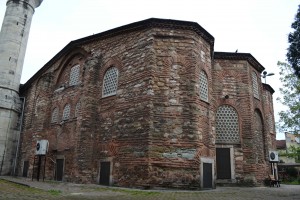
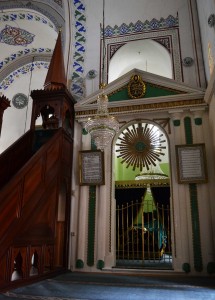
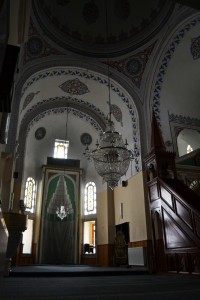
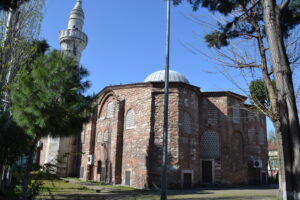
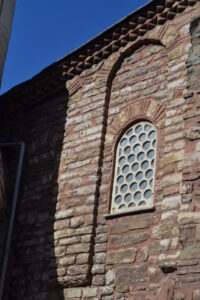
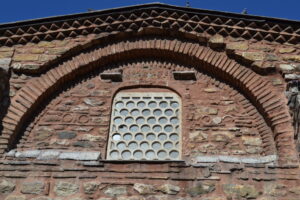
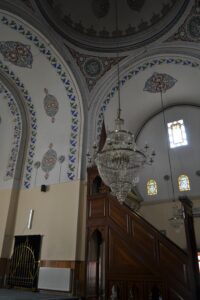
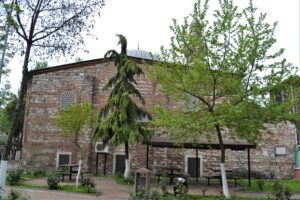
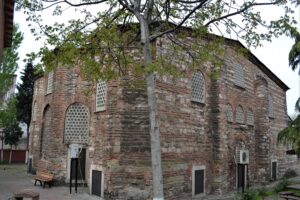
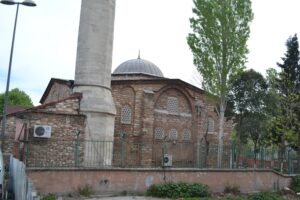
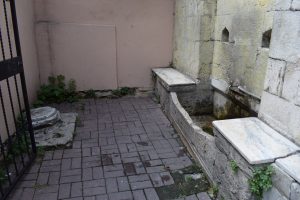
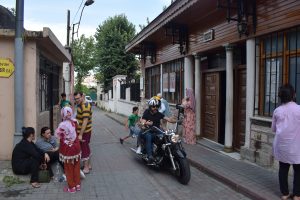

June 30th, 2014 at 10:16 am
[…] Atık Mustafa Paşa Camii […]